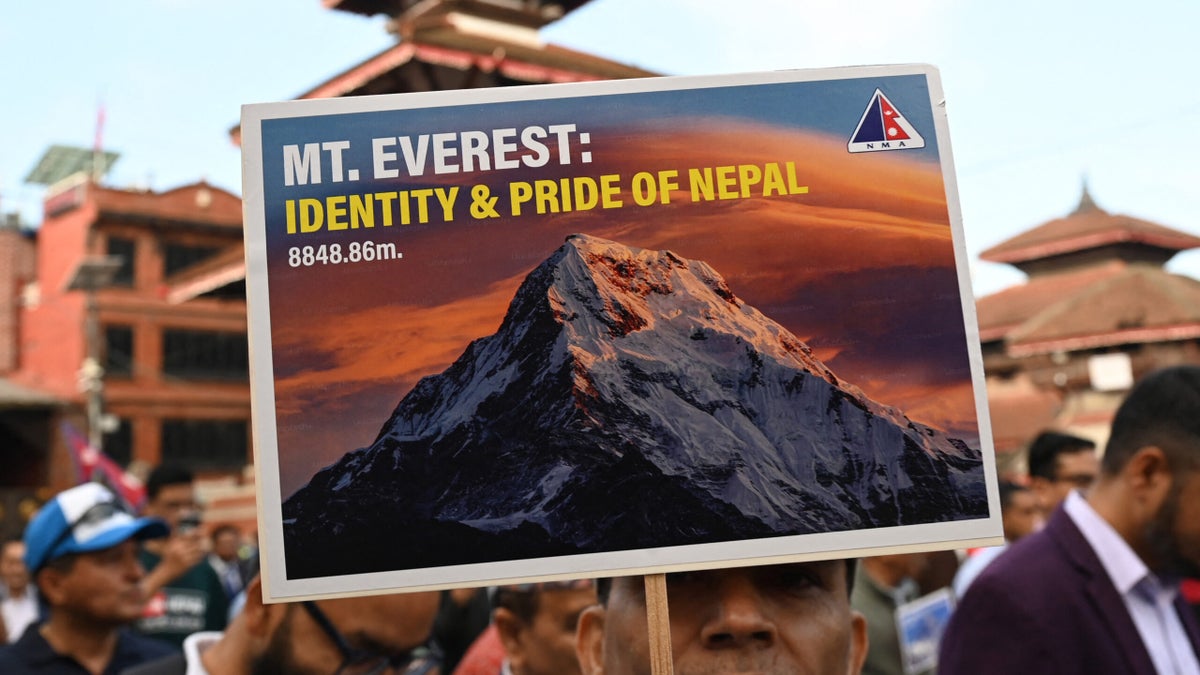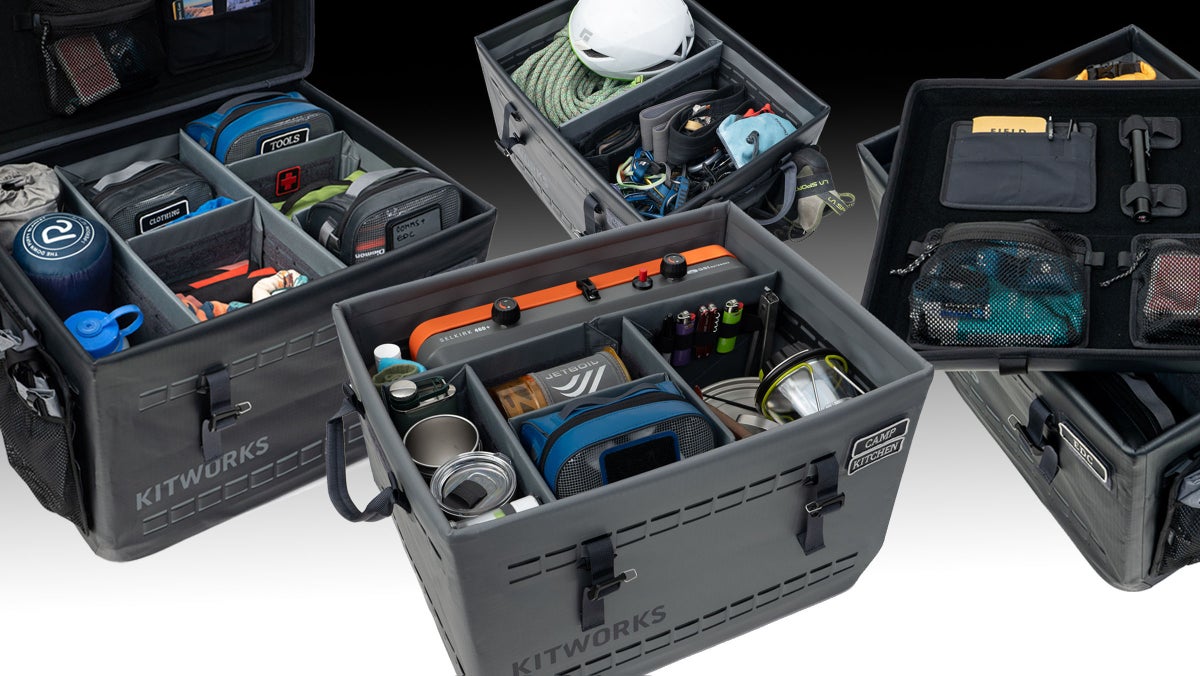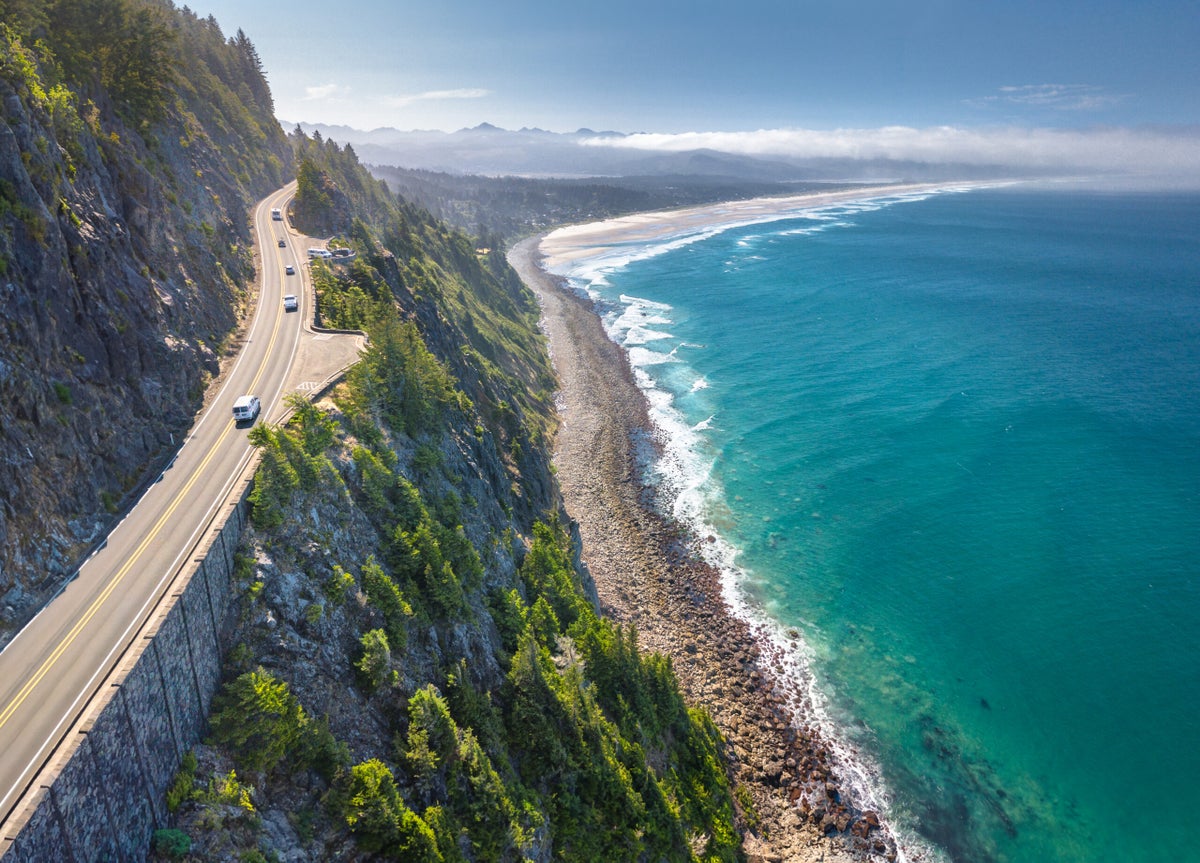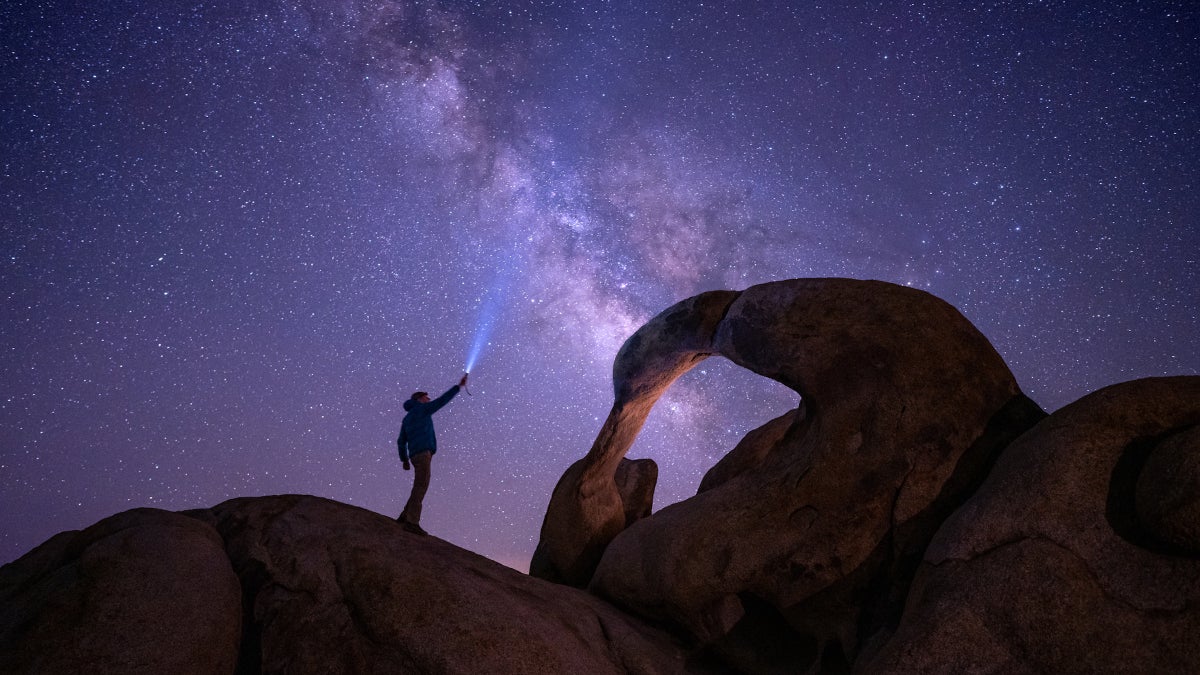
The only thing better than sleeping under the stars is camping beneath the Milky Way’s glittery galactic center, and now is the best time to do that.
July and August provide dazzling, nearly all-night views of the core of our spiral galaxy, a luminous bulge of stars, dust, and gas. But seeing the Milky Way does require a bit of planning—something I’m currently in the throes of as I plot summer astrophotography expeditions from New Mexico to Maine.
Here’s how and when you can spot the Milky Way this summer, plus seven of the country’s best destinations for galaxy gazing.
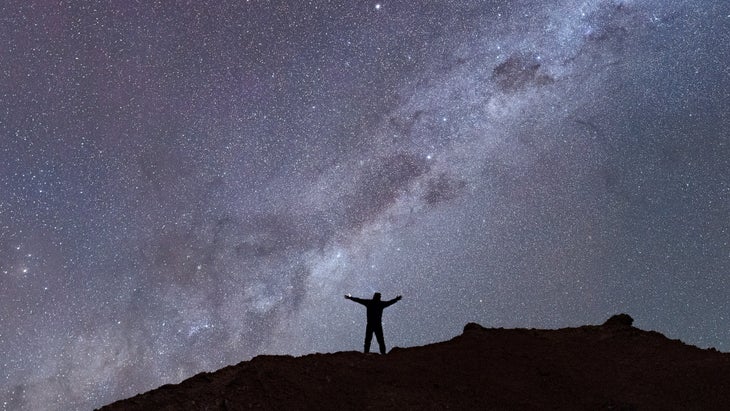
When Is the Best Time to See the Milky Way?
You can technically see a portion of the Milky Way all year, but you can’t always admire the photogenic core. That’s due to our solar system’s location, as well as Earth’s rotation around the sun.
The Milky Way is a spiral galaxy, and our solar system lies on its outer fringes. From late November through January, the sun hovers between the galactic center and Earth. We can still our galaxy’s outer reaches—a spray of bright stars and space dust—but the real treat hits in spring, when we move far enough around the sun for the Milky Way’s galactic center to come back into view.
The core is visible in the early morning hours from spring into early summer, and for a few hours after dusk in the fall. But July and August deliver eye-popping, and nearly all-night views of our galaxy’s interior—if you’re in the right place at the right time.
How Can I See the Milky Way?
Darkness is a must if you hope to see the Milky Way core. You need inky skies, and that starts with avoiding artificial light. I use light pollution maps and scout DarkSky International’s lineup of certified spots to plan my stargazing outings.
Timing is also important. Schedule your Milky Way pursuits for around five nights before and after a new moon to avoid lunar light.
And consider the light you produce out in the field. It takes our eyes about 30 minutes to adjust to the dark after exposure to bright white light. That includes your phone. Once you’re safely in your stargazing spot, switch to a red-light headlamp to help preserve your night vision (or ditch light entirely), and turn off your phone. If you do need the latter to check stargazing apps or weather and safety alerts, use this hack for a shortcut to turn your phone’s screen red.
Where Can I See the Milky Way in the U.S.?
Northerly destinations may get the best aurora views, but the Milky Way core, which travels above the southern horizon near the Sagittarius constellation, is much more visible in the lower 48 states. That’s why I focus my domestic stargazing trips on the contiguous U.S.
Here are seven of the best places to see the Milky Way across the country, as well as where to sleep beneath the stars while you’re there.
1. Greater Big Bend International Dark Sky Reserve, Texas
This more than nine-million-acre reserve from Fort Davis to the Rio Grande is about as dark as skies can get in the contiguous U.S., and it’s packed with picturesque spots for galaxy viewing. Big Bend National Park is among the best of them, with backcountry camping beneath pristine nightscapes (permit required; from $10 per night) or the popular and peak-flanked Chisos Basin Campground (reservation required; from $16 per night). For a national park alternative that’s also within the reserve, try stargazing at Big Bend Ranch State Park, particularly along River Road.
2. Capitol Reef National Park, Utah
Remote is an understatement when it comes to Capitol Reef National Park, a destination that’s almost 100 miles from the nearest traffic light. The 242,000-acre park offers numerous night-sky vantage points, including the primitive and pinyon-dotted Cathedral Valley Campground (free), Slickrock Divide on the Scenic Drive, and Panorama Point. Overnighting in the park provides the best stargazing, but you can also stay just outside its boundaries for a night of stargazing in a retro wagon at Capitol Reef Resort (from $199).
3. Chaco Canyon Natural Historic Park, New Mexico
Chaco Canyon in northwestern New Mexico has long allured space enthusiasts with its dark skies and millennia-old astronomical history. Ancestral Puebloans incorporated astronomy, particularly the solar and lunar cycles, into their architecture and culture. Today, light pollution measures have preserved the skies above this UNESCO World Heritage Site and DarkSky-certified park. Pitch a tent beneath our galaxy’s glowing core at Gallo Campground (from $20 per night); it’s located 1.5 miles from the visitor center. And don’t miss the Pueblo Bonito Overlook to see ancient ruins beneath a sea of shining stars.
4. Katahdin Woods and Waters National Monument, Maine
As one of the darkest places in the eastern U.S., Katahdin Woods and Waters National Monument is another stargazing destination for your bucket list. It’s an International DarkSky Sanctuary, with numerous views toward the heavens, including the Lunksoos picnic area and the Loop Road overlook. Given the getaway’s remoteness, camping is the easiest way to admire the Milky Way. The only caveat: you need a campground with as little forest cover as possible. For that, try Sandbank Stream campground (from $8 per night) on the park’s southern end for relatively open views to the night sky.
5. Keweenaw Peninsula, Michigan
Michigan’s Upper Peninsula is one of my favorite lower 48 aurora-hunting perches, and it’s also a great spot to catch the Milky Way core, particularly in the Keweenaw Peninsula’s remote northern fringes. Admire our spiral galaxy from Brockway Mountain or visit the Keweenaw Dark Sky Park, located at the Keweenaw Mountain Lodge. You can overnight at the latter (from $225 per night) for easy stargazing access, or book a stay at lakefront Fresh Coast Cabins (from $135), where you could catch both the northern lights and the Milky Way core in one night.
6. Cherry Springs State Park, Pennsylvania
Light pollution plagues much of the eastern U.S., but you can easily dodge it at Pennsylvania’s DarkSky-certified Cherry Springs State Park. The stargazing hub, located 180 miles northeast of Pittsburgh, provides several options for admiring the heavens. There’s a public viewing area for hobbyist stargazers craving a few hours beneath the cosmos, or an overnight observation field with strict light pollution regulations for astronomers and astrophotographers with telescopes and camera equipment; it requires a permit ($25 per night). You can also find cabin accommodations just outside the park (from $179 per night).
7. Sinks Canyon State Park, Wyoming
Glacier-carved Sinks Canyon State Park is Wyoming’s first DarkSky-certified park. The getaway is best known for its disappearing waterway—the Popo Agie River, which seemingly stops in a limestone cavern, then reappears a quarter-mile later in a rainbow trout-filled pool. But the nightscapes are just as mind-bending in this mosaic of limestone. Enjoy the Milky Way views by camping (from $10 for Wyoming residents and $18 for nonresidents) or yurt glamping (from $79). Sinks Canyon lies in the Wind River Range, around 165 miles southeast of another stargazing favorite, Jackson Hole.
The post Now Is the Best Time to See the Milky Way in the U.S. Here’s How. appeared first on Outside Online.













